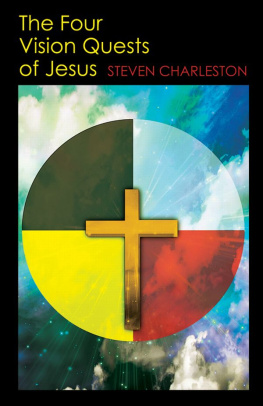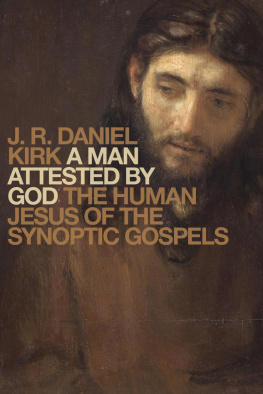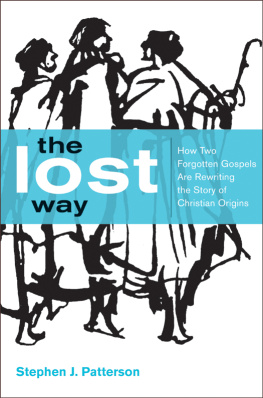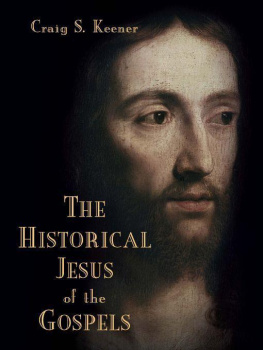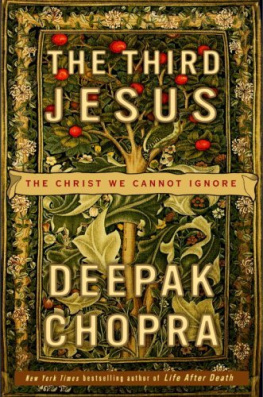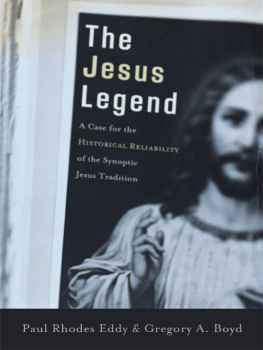The Four
Vision Quests
of Jesus STEVEN CHARLESTON

Copyright 2015 by Steven Charleston
All rights reserved. No part of this book may be reproduced, stored in a retrieval system, or transmitted in any form or by any means, electronic or mechanical, including photocopying, recording, or otherwise, without the written permission of the publisher.
Unless otherwise noted, the Scripture quotations contained herein are from the New Revised Standard Version Bible, copyright 1989 by the Division of Christian Education of the National Council of Churches of Christ in the U.S.A. Used by permission.
All rights reserved.
Morehouse Publishing, 19 East 34th Street, New York, NY 10016
Morehouse Publishing is an imprint of Church Publishing Incorporated.
www.churchpublishing.org
Cover design by Laurie Klein Westhafer
Typeset by Denise Hoff
Library of Congress Cataloging-in-Publication Data
A catalog record of this book is available from the Library of Congress.
To Susan
My family has lived in America for thirty thousand years. They farmed the land. They built towns and raised families. They worshipped God. Year after year, generation after generation, they lived in this land and they called it home.
And, yet, I am a second generation American.
When my father was born in 1923 he was not an American citizen. American Indians were not allowed to be citizens until 1924. When they thought we were all but extinct, the federal government gave us citizenship. They had done everything they could to erase our thirty thousand year history. In the end, before we disappeared forever, they wanted us to be able to be called what they called themselves: Americans. The irony of their own actions escaped them.
I share this story to welcome you into the circle of my family. I hope it will help you begin to feel a part of our story, part of the experience of our culture, our history, and our faith. If you are not a Native person by background, this way of seeing and thinking may be different for you. It may even be difficult. But however much of a challenge it may be for you to enter into the Native story, to our way of thinking and remembering, I hope you will always feel welcome in the circle of my family. You do not have to embrace everything at once. It is enough that you are here. In fact, you honor my ancestors by being here.
This book is a personal theology. It arises from my experience as both a Native American and a Christian. It is about my struggle to reconcile these two halves of who I am. I do not share this personal theology with any pretense that I am speaking for all Native people or for any other Christians. I only offer it for what it is worth as my testimony.
My book is about the four vision quests of Jesus. It tells how I came to read and interpret the Bible through the eyes of traditional Native American religion. It offers a Christian theology that is based on Native tradition, on the original Covenant God made with my ancestors, with the Native people of this continent. Therefore, my book is about the Native traditions of North America and how they are a living Covenant that can enrich and change how we understand Jesus. To help you feel welcome in this new circle of thinking, let me say a few words about how my book is put together.
First, I know that there are many different ways to refer to the indigenous people of North America. We have been called American Indians, Native Americans, and First Nations. I have used the term Native American because it seems the most common usage at the time of this writing. I also refer to what are sometimes called tribes as nations because I want to underscore the reality that Native communities were and are sovereign nations. The only time I use tribe is when I speak of the tribe of the human beings, an image of the human family around the world.
My book is divided into eight chapters. In the first four chapters, I consider what it means to be a spiritual seeker from the Native American viewpoint.
In , The Messiah, I suggest how this visionary process embodies the holy.
is a hinge chapter, The Clown. It shifts from the broader topics about a vision quest to the more specific issues of translating those Native American understandings into a Christian theology. This chapter is a bridge between tradition and testament. Therefore, it is about John the Baptist.
The last four chapters of my book discuss the four vision quests of Jesus: The Wilderness, The Mountain, The Garden, and The Cross. Each of these stories is taken directly from the gospel of Matthew. I use only one translation of the Bible throughout the book, the New International Version (NIV) published by Zondervan. I would recommend that you read each story as it appears in the scripture before reading the chapter: (a) Matthew 4:111, (b) Matthew 17:18, (c) Matthew 26:3646, and (d) Matthew 27:3255.
Matthew is the only scriptural reference I use, with a few exceptions. This keeps the focus of my theology very consistent to one gospel writer. Each one of Matthews four vision quest stories appears within a context of Native history and culture. These contexts vary as I have tried to use the wisdom of different Native communities to articulate an interpretation of Christian themes, e.g., Lakota for the Plains tradition, Choctaw for the Woodland tradition, Hopi for the Desert tradition. At the end of the book I have endnotes to share references I used for that chapter or to offer a brief commentary.
My goal in writing this book is to make a contribution toward the continuing development of a Native American Christian theology based on the Native Covenant, the tradition given to our people by God over 30,000 years of our spiritual evolution on this continent, a land sovereign to our nations and sacred to our people. I hope this theology will be a support to all persons seeking spiritual wisdom and reconciliation.
Thank you for reading it. Welcome to the family.
On a cold autumn morning in 1973 I went out onto the roof of the apartment building where I lived in Cambridge, Massachusetts, which was student housing at the seminary I attended. It was an old brick building, four or five stories high, sitting in the midst of Harvard University. I walked out onto the flat roof and looked up at the gray New England sky. Dark clouds drifted by. The city was quiet, just waking up for the start of another day.
I took a small box of cornmeal that I had bought at the local grocery store, opened it, and slowly poured it out into a circle around me. I stood in this circle and began to pray. I turned to acknowledge the four sacred directions, calling on the spirit of each one to surround me. I prayed to the Creator above me and the Earth below me to hold me in a spiritual equilibrium. I spread my arms and asked my ancestors to hear me and come to support me in any way they could. I called on the name of Jesus.
I did all of these things because I was deeply troubled. I was a young, twenty-something Native American attending a Christian seminary to become a priest. I had chosen to do so because I felt I was called by God to a religious vocation. I believed in Jesus Christ as the Son of God and I wanted to follow him. But now I was having doubts.
My doubts came from a book by Vine Deloria, Jr. called God Is Red. Deloria, a Native American author from South Dakota, took the position that Christianity was not the religion for Native American people. Later in life, I met Vine and we became friends. I even knew his father, a very well respected Episcopal priest and Lakota elder who served the church in South Dakota. But in these early years, when his book had just come out, I only knew Vine Deloria by the words he wrote and those words shook my world.

